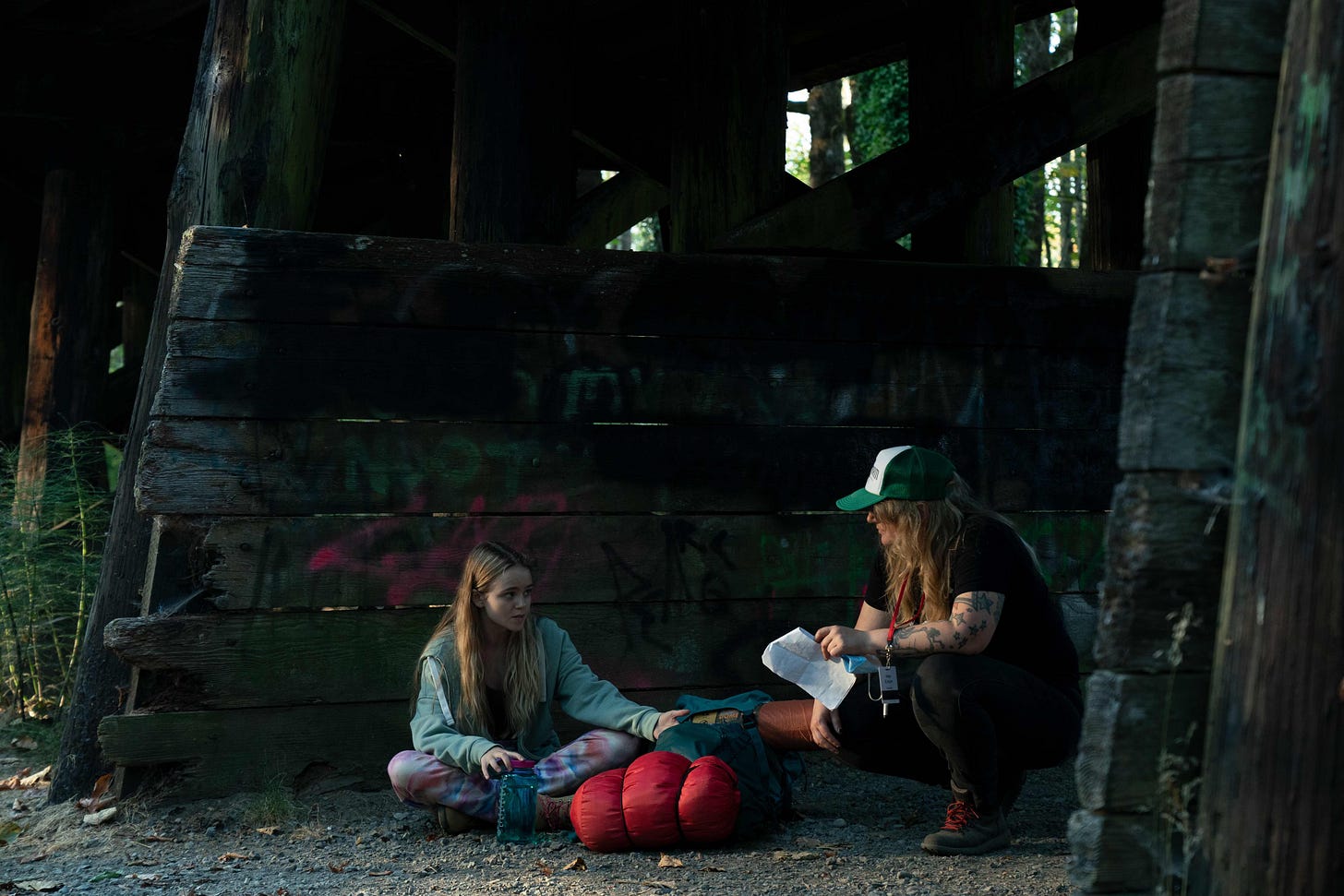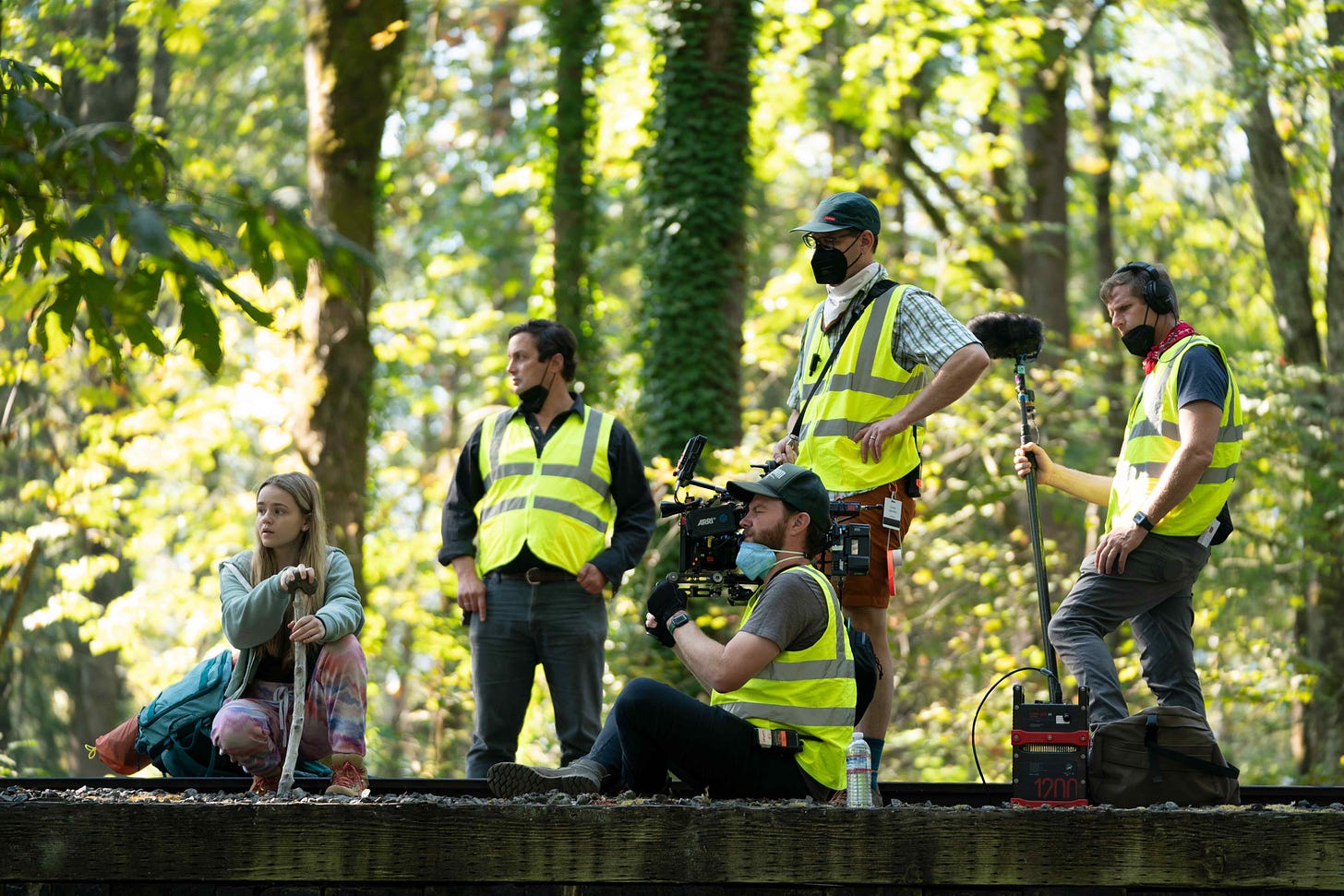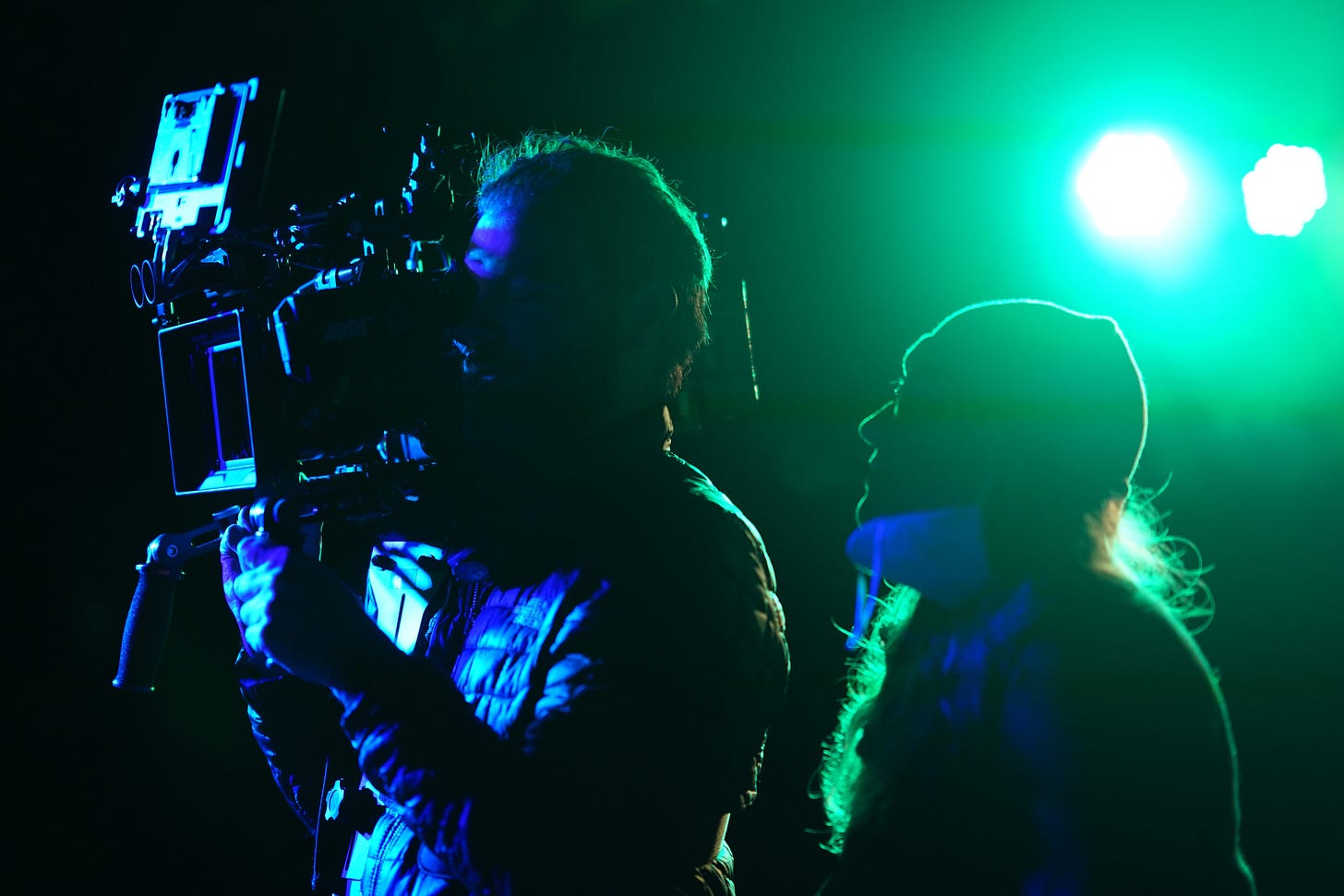Mel Eslyn on Penelope
An interview with one of the creators of one of the most watched shows of the fall
I wrote about PENELOPE here, after watching the first three episodes of the Duplass Brothers Productions’ new series, written by Mark Duplass and Mel Eslyn and directed by Eslyn. I knew I’d have more to say. But cooler than just saying it—I’m not a critic, after all—I had the keen privilege of sharing my thoughts and questions with the spectacular person who co-wrote, co-produced and directed the thing. It’s an even keener privilege to share with you Mel’s responses on subjects ranging from modern adolescence to collaboration to interiority. Enjoy—and don’t worry, no hard spoilers. But def watch the series on Netflix if you haven’t already.
Interiority
Dayna: This show relies so much on interiority—some of Penelope’s most consequential turning points take place in silent, solitary moments where all we have to go on are her micro-expressions, the movement of her eyes, the tilt of her face. (Totally my jam!) This is a heavy lift for any actor, but—and apologies if this is ageist of me—I think it’s especially a lot for someone as young as Megan. As director, what helped you create the conditions where she could shine in these moments? And what were those quiet, interior moments like to create together?
Mel: There are big chunks of the script with little to no words, just actions and tone and emotions mentioned. In prep, Megan and I talked through all of the emotional beats and arcs that would be happening internally. So often, it was Megan memorizing an emotional evolution versus actual lines of dialogue. When it came to being on set, we worked hard to set up the environment as authentically as possible so Megan could walk into a real experience. When she had to build something in the woods, it often wasn’t built for her, but rather materials were laid out for her to find and piece together. We talked mechanics of things a bit before each scene, but I wanted to really capture a learning and discovery process. So rather than shoot in bits and pieces, we’d roll for long periods to capture a whole process.

Personal growth
Dayna: One of the most moving aspects of the series for me was the arc of Penelope’s development into an adult. I love how that shows up visually: In 105 when we emerge from the fantastic baby montage she’s wearing this beige flannel, and everything feels different. She’s embodied in a new way, and able to do things she couldn’t do before (like build a really cool shack!). In 106 we get to see how she thrives in the company of her peers. In 107 she suddenly looks like a woman, but it’s subtle. Can you talk about the mélange of production elements that went into that gradual transformation—as well as share how you discussed Penelope’s growth trajectory with Megan?
Mel: There were a lot of elements that we gave slow transitions to, between the environment shifts, the clothing wear and tear, how dirty her fingernails got, the shifts in her dynamic and relationship to nature, etc. But around episode 5 there is a very clear pivot and acceleration in her development. She’s now armed with more materials and new clothes, and has made a conscious decision to not only keep going, but to go deeper into the woods. Metaphorically and physically. But there are certain elements that she carries throughout the season, her yellow hat being one of them. That was maybe the only wardrobe piece that I went in requesting. I wanted to always be able to find Penelope’s yellow head bobbing along in the sea of green of the forrest. And I wanted one element that could gradually fade and show wear and tear throughout the season. The visual manifestation of her journey, even down to when she bleeds the hat carries blood.

Adolescence
Dayna: I think everyone is reading The Anxious Generation except me. My mother ordered it so she can understand her grandkids better—more than once I’ve heard her say, “I don’t know what the world is like for young people.” In PENELOPE the iPhone feels radioactive or poisonous, but more because it represents the life she’s turned away from—granted a modern, very online life. Do you have theories about what all she’s rejecting and why? Social media? Capitalism? Patriarchy? Family? Or is that one of the central mysteries of the show?
Mel: It was always really important to us that we never really tell you why she left. You get bits and pieces throughout, but there is nothing definitive within the season. You can draw your own conclusions, which is what I prefer: the space to allow audience projection. Penelope leaves for many reasons, we’d all have our own unique batch of reasons for doing the same thing. And really, I think a lot of us have callings that we sometimes can’t understand. A pull or push towards or away from something that we can’t quite articulate and I don’t think we should have to.
Scale
Dayna: For an independent filmmaker, the concept of “makeability” can loom large in writing and development processes. And on one hand the idea of a girl alone in the woods is a contained idea—in theory it seems not easy, but possible to make on a low budget. On the other hand it also must have been incredibly physically and logistically hard to pull off. (Which of course virtually everything is, when it comes down to it!) What scared you most about taking this project on, and what turned out to be way easier—or harder, or different—than you expected?
Mel: While ultimately this show was made on an indie model, it was not written to be an indie show. This show was much bigger than the budget we had, and I wouldn’t say anything was easy. Shooting in the forest is not easy. It may be fun and invigorating, but you can’t control Mother Nature and her sometimes erratic decisions. On an indie scale budget, if you lose one day to forest fires or torrential rain, it can be devastating. And that happened. And it didn’t mean we got an extra day or so, it meant smushing two days into one. It was one of the hardest things I’ve had to do as a director.
One of the decisions we made early on was to have me direct all episodes while also showrunning, knowing we were going to be making this at indie filmmaking breakneck speed, which included cross boarding. Cross boarding means you shoot out a location, so there would be days where we’d need to shoot scenes from say six different episodes that all had scenes in that one location. We needed someone who knew the story and arc of the season inside and out. To be able to jump around in time and still know where the character needed to be emotionally, and how things should look and feel at that point in the season.

Collaboration
Dayna: There are so many modes of collaboration and every project is different. What did you discover about your relationship, each other, yourselves—creatively and otherwise—through this project?
Mel: There were so many phases of collaborations on this one, which of course is part of the filmmaking process.
While Mark and I wrote together, he wasn’t on set. When the pass-off happened, which it really was sort of a baton passing, suddenly everything was in my court. Having the trust of Mark to make decisions as to where to take what we’d created was both daunting and thrilling. Megan and I established a trust over the course of many zoom sessions leading up to the shoot. That was vital. We had to both be able to lock into where we were in the story and Penelope’s internal place and often rather quickly. Megan is in every scene, so in many ways she almost became Penelope. She never stepped away. She was so dialed in at any given moment.
My Director of Photography and Co-Producer, Nate (Miller) is also my partner in life, so we were actually living with this show for a long time. We have a shorthand on set that allows us to work efficiently together. We spend so much time watching movies and talking, we have shared references that we can pull from rather quickly. We are also both perfectionists and believe in the importance of a shotlist. We both came up in indie film and know the best way to prepare for the unknown is to really really shotlist. And we both understand that you shotlist to throw it out on the day because nothing goes as planned. But you’ve been through the process of talking through what’s important that suddenly you know how to prioritize and work quick on your feet.
On that last point: The commitment to plan the crap out of something is one thing; the simultaneous willingness to fully scrap the plan, should reality ask you to, is another. When the two can coexist, not only is it a fantastic approach to filmmaking but it’s the kind of flexible thinking that can apply to everything, I think. To life.
When we watch anything at all, what we see on the screen is such a shockingly modest fraction of what went into it. Sure, it starts off small—an idea in someone’s head—but with any luck it’s going to get big and messy and impossible before distilling down into the thing we watch on screen. Whether or not we detect it, entire worlds and lifetimes live under the surface of any work of art. If it’s a striking piece of art like Penelope, then it’s an undeniable treat to get whiffs of those worlds.
Huge, thanks, Mel!






